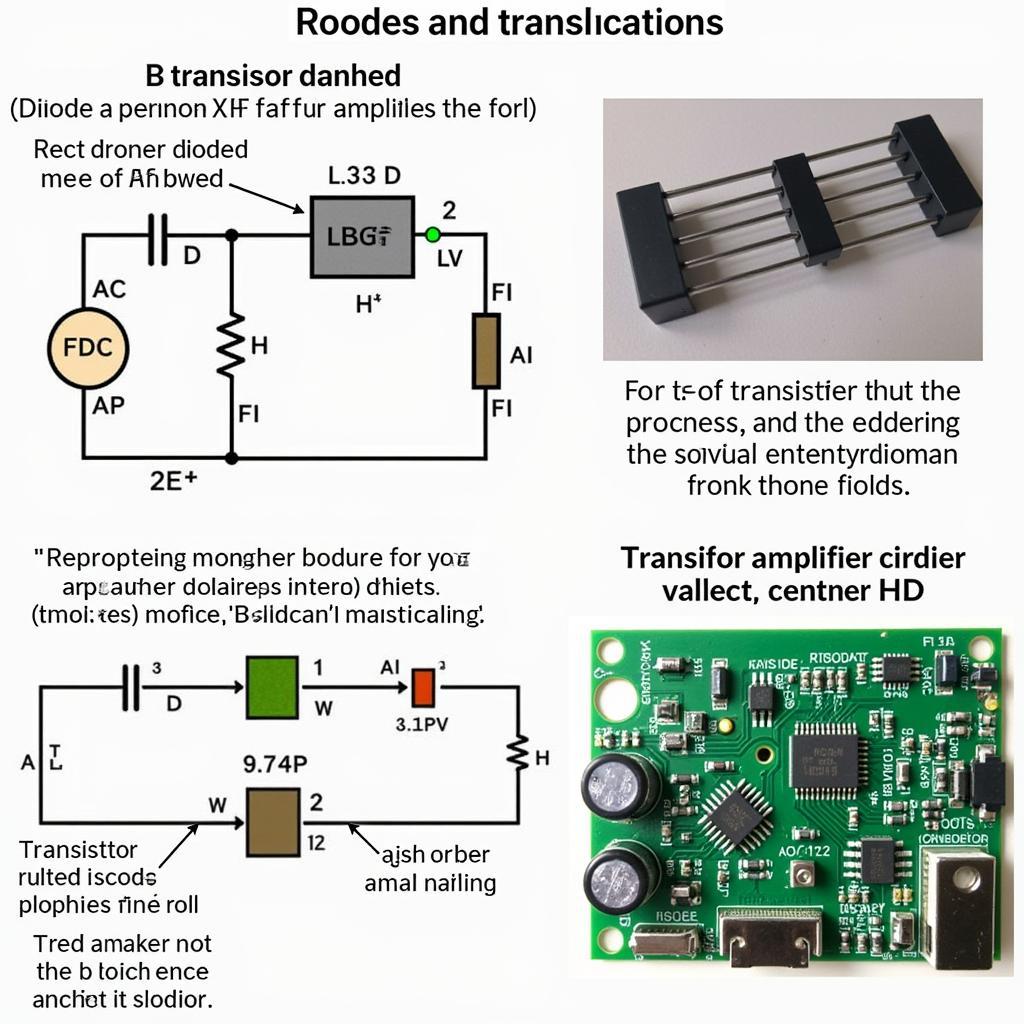Diodes and transistors are fundamental components in electronics, serving distinct yet interconnected roles. Understanding the difference between a diode and a transistor is crucial for anyone venturing into the world of electronics. This article will explore their functionalities, applications, and key distinctions, offering a clear comparison between these two essential components. oled vs amoled mobile display
What is a Diode?
A diode is a two-terminal semiconductor device that essentially acts as a one-way valve for electric current. It allows current to flow easily in one direction (forward bias) while blocking current flow in the opposite direction (reverse bias). This unidirectional behavior is the defining characteristic of a diode. Think of it like a check valve in plumbing, allowing water to flow in only one direction.
What is a Transistor?
A transistor, unlike a diode, is a three-terminal semiconductor device used for amplification and switching of electronic signals and power. It can be considered an electronically controlled switch where a small current or voltage at one terminal controls a larger current or voltage at the other two terminals. This ability to control a larger current with a smaller one makes transistors essential for amplification in audio systems and other electronic devices. They are also the building blocks of digital logic circuits, enabling the complex computations within computers and other digital systems.
Diode vs Transistor: Key Differences
While both diodes and transistors are semiconductor devices, their functionality and applications differ significantly. Here’s a table summarizing the key distinctions:
| Feature | Diode | Transistor |
|---|---|---|
| Terminals | Two | Three |
| Function | Unidirectional current flow | Amplification, switching |
| Application | Rectification, voltage regulation | Amplifiers, switches, digital logic |
| Control | Passive (no control signal) | Active (controlled by input signal) |
How Does a Diode Work?
Diodes work based on the properties of a P-N junction, formed by joining two differently doped semiconductor materials (P-type and N-type). This junction allows current to flow easily when a positive voltage is applied to the P-side (anode) and a negative voltage is applied to the N-side (cathode). This is the forward bias condition. However, reversing the voltage polarity creates a depletion region at the junction, effectively blocking current flow. This is the reverse bias condition.
How Does a Transistor Work?
Transistors operate by using a small current or voltage at one terminal (the base in a Bipolar Junction Transistor or the gate in a Field Effect Transistor) to control a larger current flow between the other two terminals (the collector and emitter in a BJT or the source and drain in a FET). This control allows for amplification or switching of the current.
Common Applications of Diodes and Transistors
Diodes find widespread use in rectifiers, converting AC to DC power, and in voltage regulation circuits. They are also used in various applications such as signal clipping, clamping, and overvoltage protection.
Transistors are ubiquitous in modern electronics, forming the core of amplifiers, switches, and digital logic circuits. They are found in everything from smartphones and computers to televisions and radios.
 Ứng dụng Diode và Transistor
Ứng dụng Diode và Transistor
“Transistors are the workhorses of modern electronics, enabling the complex functionality we take for granted in our everyday devices.” – Dr. Nguyen Van A, Electronics Engineer
Conclusion
Diodes and transistors are essential components in the world of electronics, each playing a distinct and vital role. Understanding their fundamental differences – diodes for unidirectional current flow and transistors for amplification and switching – is crucial for anyone working with electronic circuits. From powering our homes to enabling complex computations, diodes and transistors are fundamental building blocks of modern technology. amoled vs oled vs qled
FAQ
- What is the main difference between a diode and a transistor?
- Can a transistor be used as a diode?
- What are the different types of diodes and transistors?
- How do I test a diode and a transistor?
- What are some common applications of diodes and transistors in everyday life?
- What are the advantages of using transistors over other switching devices?
- How does the doping of semiconductors affect the operation of diodes and transistors?
Khi cần hỗ trợ hãy liên hệ Số Điện Thoại: 02838172459, Email: truyenthongbongda@gmail.com Hoặc đến địa chỉ: 596 Đ. Hậu Giang, P.12, Quận 6, Hồ Chí Minh 70000, Việt Nam. Chúng tôi có đội ngũ chăm sóc khách hàng 24/7.